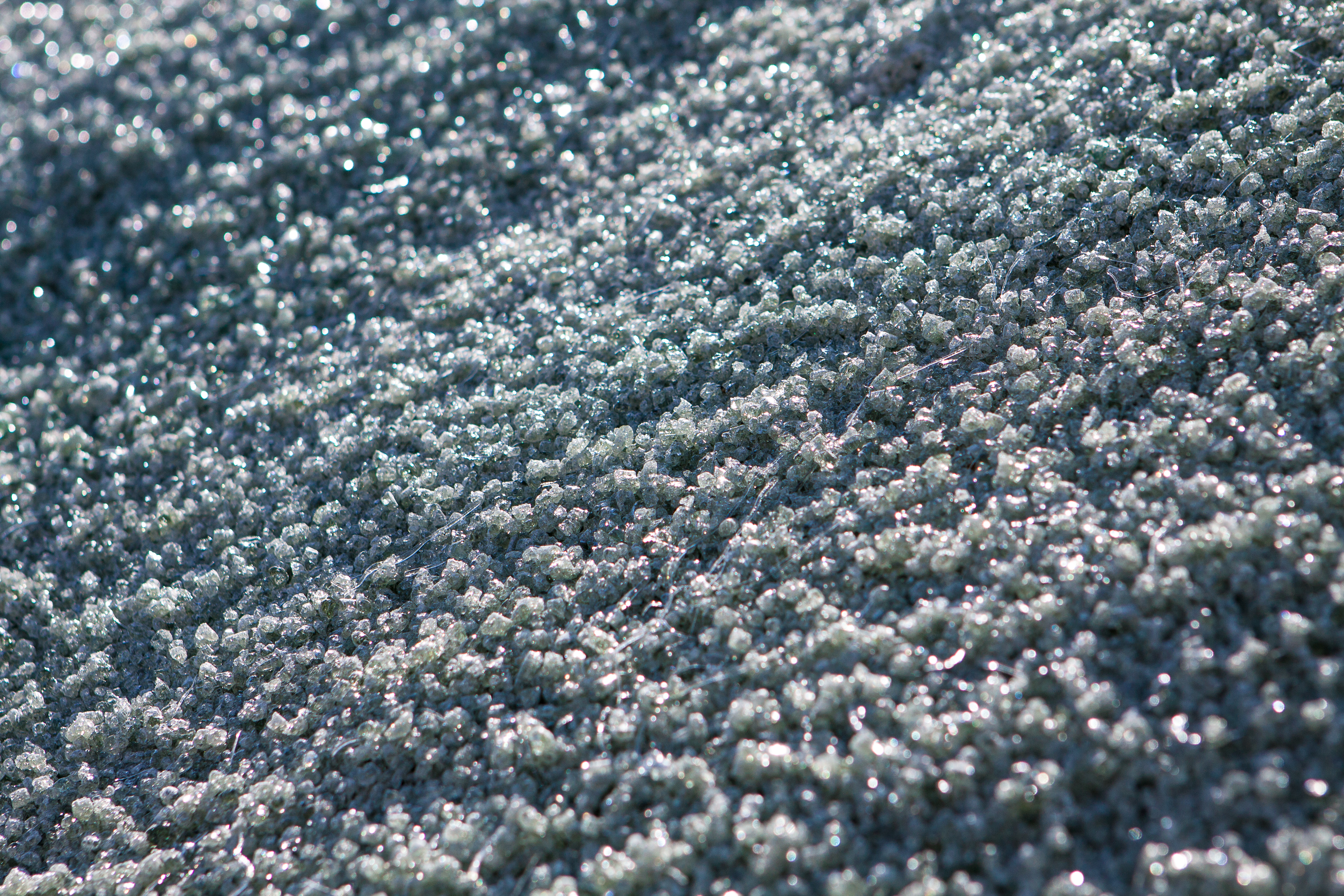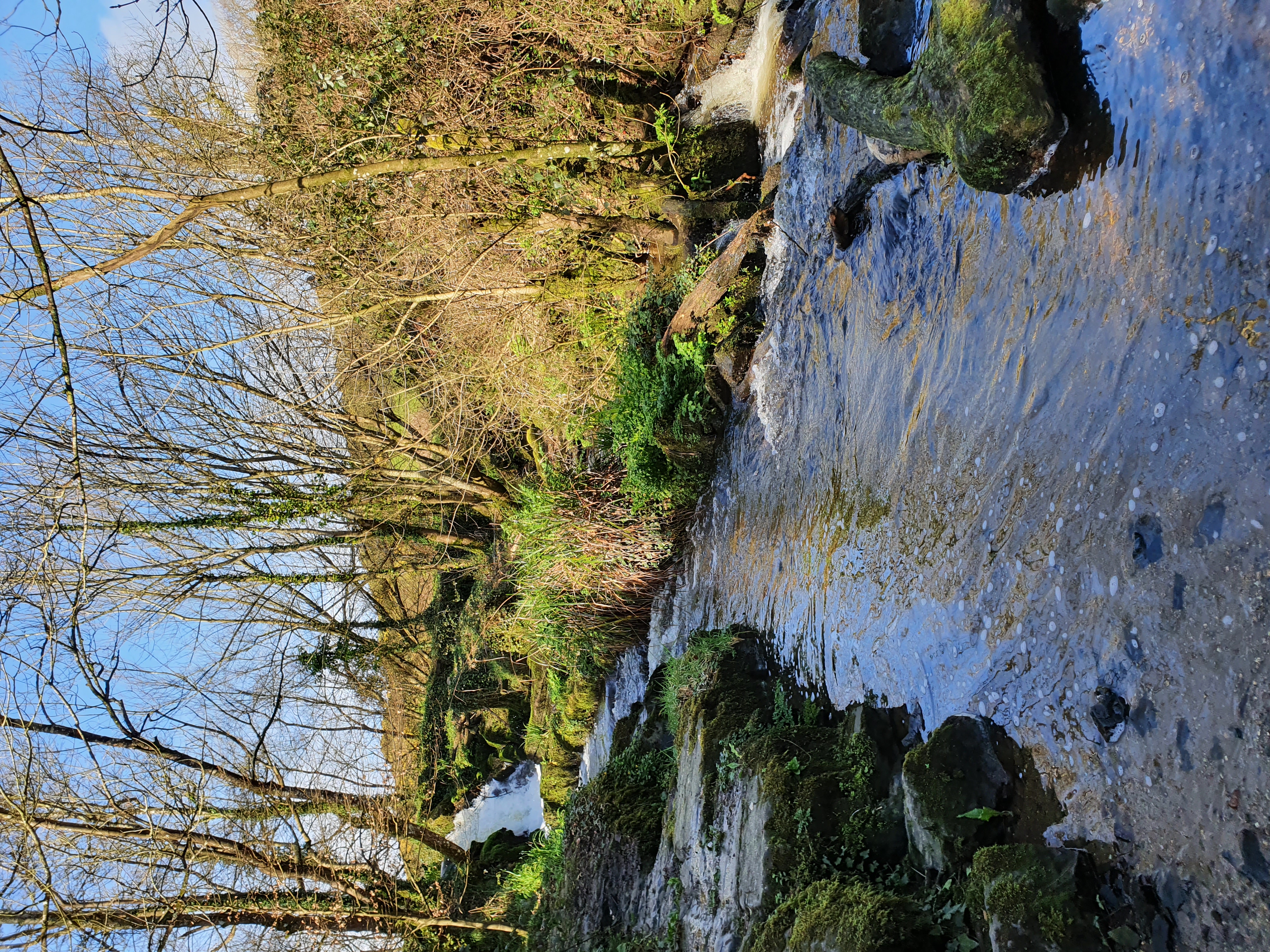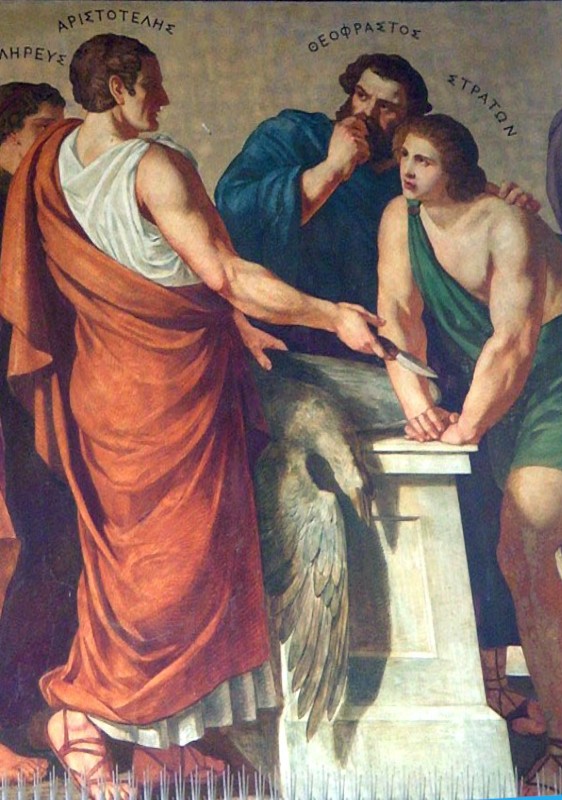|
Caeruleum
Egyptian blue, also known as calcium copper silicate (CaCuSi4O10 or CaOCuO(SiO2)4 (calcium copper tetrasilicate)) or cuprorivaite, is a pigment that was used in ancient Egypt for thousands of years. It is considered to be the first synthetic pigment. Egyptian blue is produced from a mixture of silica, lime, copper, and an alkali. Its color is due to a calcium-copper tetrasilicate CaCuSi4O10 of the same composition as the naturally occurring mineral cuprorivaite. It was first synthesized in Egypt during the Fourth Dynasty and used extensively until the end of the Roman period in Europe, after which its use declined significantly. Apart from Egypt, it has also been found in the Near East, the Eastern Mediterranean, and the limits of the Roman Empire. It is unclear whether the pigment's existence elsewhere was a result of parallel invention or evidence of the technology's spread from Egypt to those areas. After the Roman era, Egyptian blue fell out of use and, thereafter, the m ... [...More Info...] [...Related Items...] OR: [Wikipedia] [Google] [Baidu] |
Frit
A frit is a ceramic composition that has been fused, quenched, and granulated. Frits form an important part of the batches used in compounding enamels and ceramic glazes; the purpose of this pre-fusion is to render any soluble and/or toxic components insoluble by causing them to combine with silica and other added oxides.''Dictionary of Ceramics'' (3rd Edition) Edited by Dodd, A. Murfin, D. Institute of Materials. 1994. However, not all glass that is fused and quenched in water is frit, as this method of cooling down very hot glass is also widely used in glass manufacture. According to the '' OED'', the origin of the word "frit" dates back to 1662 and is "a calcinated mixture of sand and fluxes ready to be melted in a crucible to make glass". Nowadays, the unheated raw materials of glass making are more commonly called "glass batch". In antiquity, frit could be crushed to make pigments or shaped to create objects. It may also have served as an intermediate material in the manu ... [...More Info...] [...Related Items...] OR: [Wikipedia] [Google] [Baidu] |
Azurite
Azurite or '' Azure spar''''Krivovichev V. G.'' Mineralogical glossary. Scientific editor A. G. Bulakh. — St.Petersburg: St.Petersburg Univ. Publ. House. 2009. — 556 p. — ISBN 978-5-288-04863-0. ''(in Russian)'' is a soft, deep-blue copper mineral produced by weathering of copper ore deposits. During the early 19th century, it was also known as chessylite, after the type locality at Chessy-les-Mines near Lyon, France. The mineral, a basic carbonate with the chemical formula Cu3(CO3)2(OH)2, has been known since ancient times, and was mentioned in Pliny the Elder's '' Natural History'' under the Greek name (κυανός: "deep blue," root of English cyan) and the Latin name '' caeruleum''. Copper (Cu2+) gives it its blue color. Mineralogy Azurite has the formula Cu3(CO3)2(OH)2, with the copper(II) cations linked to two different anions, carbonate and hydroxide. It is one of two relatively common basic copper(II) carbonate minerals, the other being bright green malach ... [...More Info...] [...Related Items...] OR: [Wikipedia] [Google] [Baidu] |
Pigment
A pigment is a powder used to add or alter color or change visual appearance. Pigments are completely or nearly solubility, insoluble and reactivity (chemistry), chemically unreactive in water or another medium; in contrast, dyes are colored substances which are soluble or go into solution at some stage in their use. Dyes are often organic compounds whereas pigments are often inorganic compound, inorganic. Pigments of prehistoric and historic value include ochre, charcoal, and lapis lazuli. Economic impact In 2006, around 7.4 million tons of inorganic chemistry, inorganic, organic chemistry, organic, and special pigments were marketed worldwide. According to an April 2018 report by ''Bloomberg Businessweek'', the estimated value of the pigment industry globally is $30 billion. The value of titanium dioxide – used to enhance the white brightness of many products – was placed at $13.2 billion per year, while the color Ferrari red is valued at $300 million each yea ... [...More Info...] [...Related Items...] OR: [Wikipedia] [Google] [Baidu] |
Hierakonpolis
Nekhen (, ), also known as Hierakonpolis (; , meaning City of Hawks or City of Falcons, a reference to Horus; ) was the religious and political capital of Upper Egypt at the end of prehistoric Egypt ( 3200–3100 BC) and probably also during the Early Dynastic Period ( 3100–2686 BC). Located in Upper Egypt about 100 kilometers south of the modern-day city of Luxor, Nekhen has been the subject of extensive archeological research over the past one and half centuries, and has yielded a large number of artifacts that give a greater understanding to this period of ancient Egyptian history. The city was the center of cult worship of the god Horus, who is said to have his origins in Nekhen as its tutelary deity. Tombs, temples, breweries, houses, and other structures have all been discovered that date back to the predynastic era. The oldest known tomb with painted decoration, known as the Painted Tomb, is located in Nekhen and is thought to date to c. 3500–3200 BC. It shares disti ... [...More Info...] [...Related Items...] OR: [Wikipedia] [Google] [Baidu] |
Blue–green Distinction In Language
In many languages, the colors described in English as "blue" and "green" are colexified, i.e., expressed using a single umbrella term. To render this ambiguous notion in English, linguists use the blend word ''grue'', from ''green'' and ''blue'', a term coined by the philosopher Nelson Goodmanwith an unrelated meaningin his 1955 '' Fact, Fiction, and Forecast'' to illustrate his " new riddle of induction". The exact definition of "blue" and "green" may be complicated by the speakers not primarily distinguishing the hue, but using terms that describe other color components such as saturation and luminosity, or other properties of the object being described. For example, "blue" and "green" might be distinguished, but a single term might be used for both if the color is dark. Furthermore, green might be associated with yellow, and blue with either black or gray. According to Brent Berlin and Paul Kay's 1969 study '' Basic Color Terms: Their Universality and Evolution'', disti ... [...More Info...] [...Related Items...] OR: [Wikipedia] [Google] [Baidu] |
Egyptian Language
The Egyptian language, or Ancient Egyptian (; ), is an extinct branch of the Afro-Asiatic languages that was spoken in ancient Egypt. It is known today from a large corpus of surviving texts, which were made accessible to the modern world following the decipherment of the ancient Egyptian scripts in the early 19th century. Egyptian is one of the earliest known written languages, first recorded in the hieroglyphic script in the late 4th millennium BC. It is also the longest-attested human language, with a written record spanning over 4,000 years. Its classical form, known as " Middle Egyptian," served as the vernacular of the Middle Kingdom of Egypt and remained the literary language of Egypt until the Roman period. By the time of classical antiquity, the spoken language had evolved into Demotic, and by the Roman era, diversified into various Coptic dialects. These were eventually supplanted by Arabic after the Muslim conquest of Egypt, although Bohairic Coptic ... [...More Info...] [...Related Items...] OR: [Wikipedia] [Google] [Baidu] |
Egyptian Blue Altes Museum
''Egyptian'' describes something of, from, or related to Egypt. Egyptian or Egyptians may refer to: Nations and ethnic groups * Egyptians, a national group in North Africa ** Egyptian culture, a complex and stable culture with thousands of years of recorded history ** Egyptian cuisine, the local culinary traditions of Egypt * Egypt, the modern country in northeastern Africa ** Egyptian Arabic, the language spoken in contemporary Egypt ** A citizen of Egypt; see Demographics of Egypt * Ancient Egypt, a civilization from c. 3200 BC to 343 BC ** Ancient Egyptians, ethnic people of ancient Egypt ** Ancient Egyptian architecture, the architectural structure style ** Ancient Egyptian cuisine, the cuisine of ancient Egypt ** Egyptian language, the oldest known language of Egypt and a branch of the Afroasiatic language family * Copts, the ethnic Egyptian Christian minority ** Coptic language or Coptic Egyptian, the latest stage of the Egyptian language, spoken in Egypt until the 17th cent ... [...More Info...] [...Related Items...] OR: [Wikipedia] [Google] [Baidu] |
Humphry Davy
Sir Humphry Davy, 1st Baronet (17 December 177829 May 1829) was a British chemist and inventor who invented the Davy lamp and a very early form of arc lamp. He is also remembered for isolating, by using electricity, several Chemical element, elements for the first time: potassium and sodium in 1807 and calcium, strontium, barium, magnesium and boron the following year, as well as for discovering the elemental nature of chlorine and iodine. Davy also studied the forces involved in these separations, inventing the new field of electrochemistry. Davy is also credited with discovering clathrate hydrates. In 1799, he experimented with nitrous oxide and was astonished at how it made him laugh. He nicknamed it "laughing gas" and wrote about its potential as an Anesthesia, anaesthetic to relieve pain during surgery. Davy was a baronet, President of the Royal Society (PRS), Member of the Royal Irish Academy (MRIA), a founder member and Fellow of the Geological Society of London, and a ... [...More Info...] [...Related Items...] OR: [Wikipedia] [Google] [Baidu] |
Theophrastus
Theophrastus (; ; c. 371 – c. 287 BC) was an ancient Greek Philosophy, philosopher and Natural history, naturalist. A native of Eresos in Lesbos, he was Aristotle's close colleague and successor as head of the Lyceum (classical), Lyceum, the Peripatetic school, Peripatetic school of philosophy in Athens. Theophrastus wrote numerous treatises across all areas of philosophy, working to support, improve, expand, and develop Aristotelian system, the Aristotelian system. He made significant contributions to various fields, including ethics, metaphysics, botany, and natural history. Often considered the "father of botany" for his groundbreaking works "Historia Plantarum (Theophrastus), Enquiry into Plants" () and "On the Causes of Plants", () Theophrastus established the foundations of Botany, botanical science. His given name was (Ancient Greek: ); the nickname Theophrastus ("divine speaker") was reputedly given to him by Aristotle in recognition of his eloquent style. He came to ... [...More Info...] [...Related Items...] OR: [Wikipedia] [Google] [Baidu] |
Natron
Natron is a naturally occurring mixture of sodium carbonate decahydrate ( Na2CO3·10H2O, a kind of soda ash) and around 17% sodium bicarbonate (also called baking soda, NaHCO3) along with small quantities of sodium chloride and sodium sulfate. Natron is white to colourless when pure, varying to gray or yellow with impurities. Natron deposits are sometimes found in saline lake beds which arose in arid environments. Throughout history natron has had many practical applications that continue today in the wide range of modern uses of its constituent mineral components. In modern mineralogy the term ''natron'' has come to mean only the sodium carbonate decahydrate (hydrated soda ash) that makes up most of the historical salt. Etymology The English and German word ''natron'' is a French cognate derived through the Spanish ''natrón'' from Latin ''natrium'' and Greek ''nitron'' (). This derives from the Ancient Egyptian word ''nṯrj''. ''Natron'' refers to Wadi El Natrun or ... [...More Info...] [...Related Items...] OR: [Wikipedia] [Google] [Baidu] |
De Architectura
(''On architecture'', published as ''Ten Books on Architecture'') is a treatise on architecture written by the Ancient Rome, Roman architect and military engineer Vitruvius, Marcus Vitruvius Pollio and dedicated to his patron, the emperor Caesar Augustus, as a guide for Caesar Augustus#Building projects, building projects. As the only treatise on architecture to survive from antiquity, it has been regarded since the Renaissance as the first known book on architectural theory, as well as a major source on the canon of classical architecture. It contains a variety of information on Greek and Roman buildings, as well as prescriptions for the planning and design of military camps, cities, and structures both large (aqueducts, buildings, baths, harbours) and small (machines, measuring devices, instruments). Since Vitruvius wrote early in the Roman architectural revolution that saw the full development of cross vaulting, domes, Roman concrete, concrete, and other innovations associa ... [...More Info...] [...Related Items...] OR: [Wikipedia] [Google] [Baidu] |






